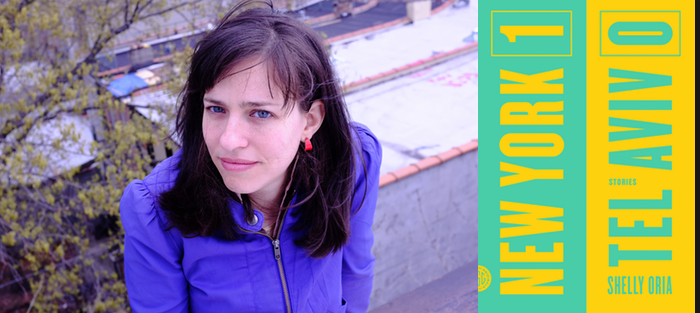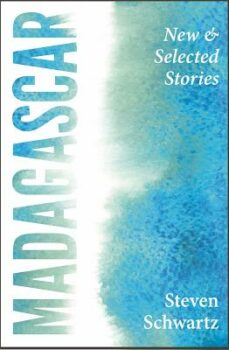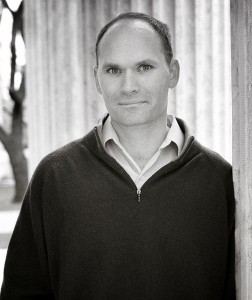Shelly Oria was born in Los Angeles and grew up in Israel. Her debut short story collection, New York 1, Tel Aviv 0, has just been published by Farrar, Straus and Giroux. Shelly’s fiction has appeared in The Paris Review, McSweeney’s, Electric Lit’s Recommended Reading, and fivechapters, among other places, and won the Indiana Review Fiction Prize and a Sozopol Fiction Seminars Fellowship in Bulgaria. She holds an MFA from Sarah Lawrence College, has a private practice as a creativity coach, and teaches fiction at Pratt Institute, where she also co-directs the Writers’ Forum.
I first met Shelly when I was lucky enough to participate in Sweet! Actors Reading Writers, an extraordinary series in the East Village that Shelly has co-curated with Annie Levy since 2009. At Sweet! Shelly was a magnetic, brilliant, and hilarious host. When I read her spectacular debut collection, New York 1, Tel Aviv 0, it was a joy to discover that she was every bit as wonderful on the page. We conducted this interview in October, several weeks before the publication of New York 1, Tel Aviv 0, via Gchat.
Editor’s Note: FWR is pleased to team up with Tin House to promote the release of Oria’s debut collection. Read “The Thing About Sophia,” an exclusive story from New York 1, Tel Aviv 0, on the Tin House blog.
Interview:
Laura van den Berg: So this is really your first time on Gchat?
Shelly Oria: Yes! So it’s already special. Thanks for breaking my Gchat virginity.
I think that would be a great opening line to our interview.
Speaking of, I wanted to start with the question of order. I’m fascinated by order in story collections and I love the trajectory of New York 1, Tel Aviv 0. How did you approach organizing the stories? Did the collection always consist of these eighteen stories or did the content shift around over time?
Okay, so that’s the question I wrote a novella-length response to just now before we got on gchat. Let’s read it together…
The order has changed quite a bit over the years. When I started working with PJ [Mark], my agent, I had maybe half a collection. Of course, I didn’t think of it as “half a collection.” But my friend Julie Stevenson, who’s an agent herself now and back then was just getting into that world, told me to say that. I was lucky to have a couple publications come out around this time and to get a bit of attention, so some agents were querying me. I was in Tel Aviv at the time. I’m getting pretty far from your question here! But so, a couple of these agents were still interested when I said I was working on a collection and not a novel, and Julie was the one to tell me not to “contact them when I’m done,” which is what I was going to do, but rather to say I have about 100 pages to show. Anyway, long story short that’s how I signed with PJ pretty early on, and thank God, or thank Julie for that.
In the next few years all kinds of personal life stuff happened that slowed me down massively, so it was more than two years before I showed PJ pages again—he was incredibly supportive during that time without ever pressuring me, for which I will forever be grateful to him. And so then I kind of gave myself two deadlines and within the next few months sent him a full draft. I was already thinking about the order then, but not in a serious way because I figured some stories may still be added or taken out altogether, which turned out to be true.
My best writing friend—we call each other writing wives—lives in Hong Kong, and she’s the one I send work to when it’s still a total mess, the one I can trust to figure out what the hell I’m trying to do with something way before it’s really on the page. So back then, in the day-to-day of it, Elizabeth was the only one in it with me. It always feels fake to use the “I” because of that fact: “I” was thinking of the order this way or that way. No, I wasn’t. I was staring at it for longer than a person should ever stare at anything, then e-mailing some incoherent thoughts to Hong Kong.
I was so in it back then, so deep still in the work, that I couldn’t really see it—you know how that is, I’m sure. (Or maybe not? Maybe you have some writing magic powers that allow you to zoom in and out whenever? I wouldn’t be surprised. So much of your work has that actual movement in it.) But so, point is, it took a while before I had a real sense of the rhythm of the thing as a whole. By the time I sent PJ a final draft—this is now March of 2012—I had ordered it in a way that I felt quite attached to at the time, because Elizabeth and I had spent many hours considering it all. The way I was thinking about it was that the collection as a whole plays with, or explores, the fluidity of three elements—sexuality, nationality, and reality. Much of the work in revision was fine-tuning that balance within different stories, and some stories were taken out because they didn’t quite fit that idea. So my initial order tried to create some kind of wave thing, where stories with the same dominant element were clustered together.
Elizabeth could talk more eloquently to this, I’m sure. She was also seeing connections between stories that I wasn’t—like she had this idea that the narrator in “None the Wiser” is in some ways an older version of Boon, the narrator in “The Thing About Sophia.” Not in an actual way—she was often just looking at how a character is interacting with the world around her or him. Then PJ changed it all up. Or, well—it felt like a drastic change at the time, but really he agreed with the basic idea, and was just thinking of the rhythm a different way. And I could immediately see he was right. He basically said a very simple thing: you have three kinds of lengths here–long, medium, and short—and we need to try to go 1,2,3 whenever possible. (Everything is in 3s! Which ridiculously is kind of a famous/colloquial joke in Israel about life in the military.) My editor, Emily, suggested a few more changes later on—a story was still taken out and another added—but for the most part that order stuck.
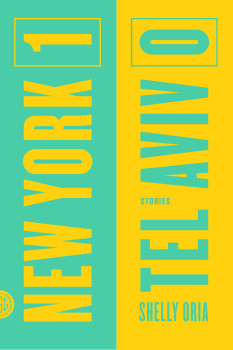 What a beautifully collaborative relationship with your agent and with Elizabeth. I totally get the 1-2-3 and the wave motion in this collection. There was the sense of looping back to some of the same beats or movements, but not in a way that ever felt repetitive. The collection always kept surprising me. Which leads into another question: I often found the humor terrifically surprising. Your stories are often very funny, in unusual and complicated ways. Is humor something you think about consciously?
What a beautifully collaborative relationship with your agent and with Elizabeth. I totally get the 1-2-3 and the wave motion in this collection. There was the sense of looping back to some of the same beats or movements, but not in a way that ever felt repetitive. The collection always kept surprising me. Which leads into another question: I often found the humor terrifically surprising. Your stories are often very funny, in unusual and complicated ways. Is humor something you think about consciously?
Thank you. No, I don’t think it is. For the most part, voice is the thing I follow. Once I have a sense of the voice, I try to get the fuck out of the way. And if I do that well enough, then, well—people are funny. Sometimes the character whose voice I just committed to will turn out to have a sense of humor. Other times, more often probably, when I really let them speak, what’s revealed are all the ways they bullshit themselves. We all bullshit ourselves in different ways, I think, just to get through a day. Get through a life. But most of the time we don’t see it. Well, obviously—it wouldn’t quite work, wouldn’t be effective if we did. And in some ways that’s what writing is about for me, I think, not only humor, but the ability to be so close to someone, your character, and yet distant enough to see. I mean, we’re closer to our characters, our POV characters at least, than we’ve ever been to anyone, even a partner or a parent or sibling, because presumably we’ve never hung out in anyone’s mind except our own. And yet we are not them—we see their shit, their ridiculousness, when they reach for an untruth, in a way or on a level that we usually can’t in ourselves, at least in real time. And that’s…well, it’s tragic, of course, too, but it’s often also funny.
Totally. We see the way our characters construct that narrative of the self, how they might use humor as a mask or means of evasion, with way more clarity than we can see ourselves or the people we’re close to.
Exactly. And what a gift that is, and what a fucking scary thing. Because at some point seeing that is seeing yourself. It has to be, right? And I don’t mean in any direct line way, not this-person-is-me-because-I-wrote-her way, just…seeing that kind of humanity. It makes you cringe. Or, makes me cringe at least.
Yes. Fiction tends to examine the darker corners. One of my favorite stories in the collection is “My Wife in Converse.” That story is written in short, impressionistic sections that come together to form a devastating whole, and some of the other stories in the collection use a similar kind of fragmentation. Does that kind of style come naturally to you?
Yes, it’s what comes most naturally. Because, as I said, I follow the voice; I usually have no idea where the fuck we’re going. I’m a hitchhiker and often the driver is kind of an asshole. Or not really an asshole, just very preoccupied with someone or something that isn’t me. So if I turned to him and said, “Excuse me, would you mind telling me where we’ll be at the end of this trip?” he would likely beat me up. But if I say, “Hey, what street is that? Looks cool” then he might play along. For me, process-wise, that’s how fragmentation happens, I think.
“I’m a hitchhiker and often the driver is kind of an asshole” is my new favorite description of process! Since we’re on the subject of voice, many of the stories are in the first-person point of view. Is there something about the first-person that you find particularly magnetic?
Well, I think that kind of relationship, when someone speaks so forcefully and directly at you, naturally forms in first-person. Although I’m now contradicting myself in my head thinking of writers who write extraordinary voices in third-person—Deborah Eisenberg, Antonya Nelson. So obviously that’s just how it naturally forms for me. The two stories in the book that are in third-person were… well, part experiments, to see if I could, and part because I needed a bit more distance in these particular two cases.
To me that’s one of the big distinctions: third-person allows you to see into and around the character; some characters can’t tell their own story.
That’s actually perfectly put—some characters can’t tell their own stories. I never thought of it quite that way, and yet it’s so true. I’m thinking now of both Avner and Nadine, the two third-person characters, and I think that’s exactly it: it would be false to write them in first-person because they can’t tell their own stories.
You’re also amazing at writing in the collective and in the second-person. I admire that range so much.
I eventually worked through it. Second-person comes fairly easily to me, because it’s like first but feels so much safer. First-person plural is often hard.
What was the hardest part about writing this book, do you think?
Letting go. I mentioned earlier some life things slowing me down and they did, but also I think I just wasn’t ready. I was kind of a bad mama—I had a kid who wanted to be out in the world and I was yelling, “You’re not ready! You’re not strong enough yet! No play dates!” My dad sat me down at some point—he’s an actor and in some ways growing up with him as a dad, seeing what it takes to put yourself out there as an artist of any kind, some experiences I had being interviewed as his daughter—all that was at the core of my hesitation to take the next step, I think. He took me to breakfast one day when I was home, and said, “You know, honey (I’m translating from Hebrew, of course, which always feels a bit fake), I know you’re working so hard on this book, but sometimes the hardest work is to let go.” And he was right.
Wow. I love that. We want to hold ourselves to a high standard, but that chase for perfection, when it comes to art (or life), can be crippling.
Exactly. And a protective choice, ultimately, when art is supposed to be about risks.
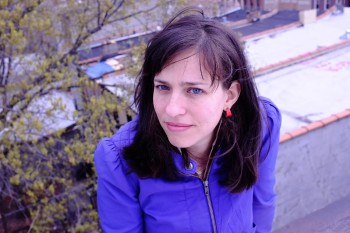 To shift in a different direction, I wanted to ask about place, since Israel/Tel Aviv is, beyond the title story, a through-line in the book. Can you talk about how you see the role of place in the collection?
To shift in a different direction, I wanted to ask about place, since Israel/Tel Aviv is, beyond the title story, a through-line in the book. Can you talk about how you see the role of place in the collection?
Hmm. That’s a tough one—there’s too much to say! The first thing that comes up for me is how a different place is always this interesting mirror—culturally, and maybe in other ways, too. We feel comfortable with similarity, but really we see the most through difference, I think. Another thing I immediately thought of when reading your question is the “fish out of water” element. When you have characters who are immigrants, they are always fish out of water in the most obvious, immediate, undeniable ways. But the thing is, of course, we all are, so it helps get at some core truth, I think. And then, on the most simple level, I grew up in Israel. I served in the military. Hebrew is my first language. My family, and so many friends, live there. I spend my summers there. So the complexity of that place, its identity, growing up with conflict as sort of the texture of everything (except it’s so embedded in the culture that no one really sees it)—all that is part of me and so it always informs my work in some way, even when I’m not writing about Israeli characters or Israel.
Two more questions?
Sure!
You have co-curated the series Sweet! Actors Reading Writers since 2009. What has seeing actors read the work of writers taught you about the art of giving public readings?
I think watching actors read fiction/nonfiction/poetry for five years has been tremendously helpful. One thing, they take their time in a way writers don’t. Annie and I learned early on that an actor will take close to two minutes for every minute of a straight forward reading of the text—we used to time it—whereas, I think writers often come in at about a few seconds under one minute. Something in the reading says I want to be off this stage already. Whereas actors—I’m generalizing, of course, but most of them—breathe better when they’re on stage, so they instinctively take longer, they want to be there, and it shows. And part of that is also being fully present. Body language, energy—they flirt with the audience. Or engage with them, at least, in a way that writers sometimes don’t. It sounds like I’m trashing writers here, and that’s obviously not what I mean to do…. Some writers are terrific readers.
Okay, last question: who were some of the most important writers while you worked on this collection?
Grace Paley was huge for me when I first started writing in English. Lydia Davis. Aimee Bender. Judy Budnitz. Nelly Reifler, who was also my teacher and is now a close friend. Gary Lutz. Saunders. I grew up in theatre and was writing plays so some playwrights have been huge influences. Christopher Durang. Suzan-Lori Parks. Marsha Norman. Paula Vogel. I mentioned Eisenberg—that’s another big one. I can go on for hours.
Editor’s Note: Read “The Thing About Sophia,” an exclusive story from New York 1, Tel Aviv 0, on the Tin House blog.

